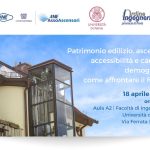The car
In British English it is called “car” (but also “cabin” in US English). This suggests the idea of a vehicle. After all, this does not clash with the lift features as this is an equipment used for the transportation of persons and/or goods. This operation will be carried out at growing speed over the years and in a safer and safer way.In British English it is called “car” (but also “cabin” in US English). This suggests the idea of a vehicle. After all, this does not clash with the lift features as this is an equipment used for the transportation of persons and/or goods. This operation will be carried out at growing speed over the years and in a safer and safer way.The 95/16/EC Lift Directive gave an explanation of the car. The original Directive edition stated the requirement of the presence of a “car” in the lift.
For the purposes of this Directive, ‘lift’ shall mean an appliance serving specific levels, having a car moving along guides which are rigid and inclined at an angle of more than 15 degrees to the horizontal and intended for the transport of:
- persons;
- persons and goods.
Still the same 95/16/EC Directive stated and prescribed in the list of the Essential Health and Safety Requirements (EHSR) relevant to the design and construction of lifts the car features.
Lift cars must be completely enclosed by full-length walls, fitted floors and ceilings included, with the exception of ventilation apertures, and with full-length doors. These doors must be so designed and installed that the car cannot move, except for the landing movements, unless the doors are closed, and comes to a halt if the doors are opened.
It was therefore clear that the main concern of the legislator was to assign to a well designed and built car the important task of safeguarding the users’ and non-users’ safety.In fact, the car had to be absolutely closed (a box with ceiling, walls, floor and doors) in order to prevent any part of the body was passed through any hole causing the risk of a collision with the shaft parts and consequent serious or very serious shearing or crushing of body parts.As well as the compulsory presence of the car at the landing as a prerequisite for the door opening, because the car was entrusted the task to “seal” the shaft by preventing people from falling during door opening.As regards the first of the two risks mentioned above (contact of elements in the car with shaft equipment), it is absolutely clear and evident that the presence of a car designed, constructed and installed according to the requirements of the Lift Directive is the only means to prevent terrifying accidents as shown in the figure on the left. The lift car has also the advantage of giving the opportunity to users with disabilities to move vertically because lifts allow anyone, as long as they are provided with a properly designed, constructed and installed car. And there is more! These buttons must be easily and immediately identifiable and be fitted with devices capable of informing the user that they have been pressed effectively.In addition, cars with doors that do not close too early but allow enough time to users to enter the car or to get out without risking of being frightened by a potential immediate closure of the doors (which must always be automatic and centre-sliding or telescopic).A careful reader has certainly already raised his/her eyebrow in sign of disagreement thinking that there are actually lifting systems without a car according to the definitions of the 95/16/EC Lift Directive and of the new 2016/33/EUOur reader is absolutely right when referring to lifting systems, like the lifting platforms. He/she will certainly pardon me because these systems aren’t lifts but machines and therefore they are subject to the safety and legislative requirements of the 2006/42/EC Machinery Directive. This Directive came into force at the end of 2009 and limited the speed of these systems to 0.15 m/s.
CAR OR NOT CAR
A bit of background to prove the essential importance of the car for these two types of systems (lifts and machines).Until the enforcement of the new 2006/42/EC Machinery Directive, the borderline between lifts and machines was established by the presence of the car (which had to be provided with blind walls, floor, ceiling and doors).Then “Car” meant “lift” and “No car” meant “machine”.With the new Machinery Directive (in 2009) the difference between the two directives was amended and was based on speed. Then “Speed 0.15 m/s” means “lift” and “speed 0.15 m/s” means “machine”.Some pages of the Directive could make us think that the lift had become something different, because in its definition the term “car” was omitted and it read as follows.
A lifting appliance serving specific levels, having a carrier moving along guides which are rigid and inclined at an angle of more than 15 degrees to the horizontal, or a lifting appliance moving along a fixed course even where it does not move along rigid guides.
It seemed that everything had changed reading the definition introduced by the Directive for a “carrier”.
A part of the lift by which persons and/or goods are supported in order to be lifted or lowered.
But actually everything was back to normal when reading the Essential Health and Safety Requirements of the Lift Directive (also of the new 2014/33/EU), stating as follows.
The carrier of each lift must be a car. This car must be designed and constructed to offer the space and strength corresponding to the maximum number of persons and the rated load of the lift set by the installer.
I am not going to describe the various operational features of today’s lift cars.I am just saying that the car is an architectonic element of essential importance for today’s buildings which are higher and higher and more and more luxurious. It is an element making the building standing out of the crowd. Cars are more and more beautiful, safer and safer.So enjoy your travel in the cars you will find in all modern buildings.
By Giovanni Varisco







